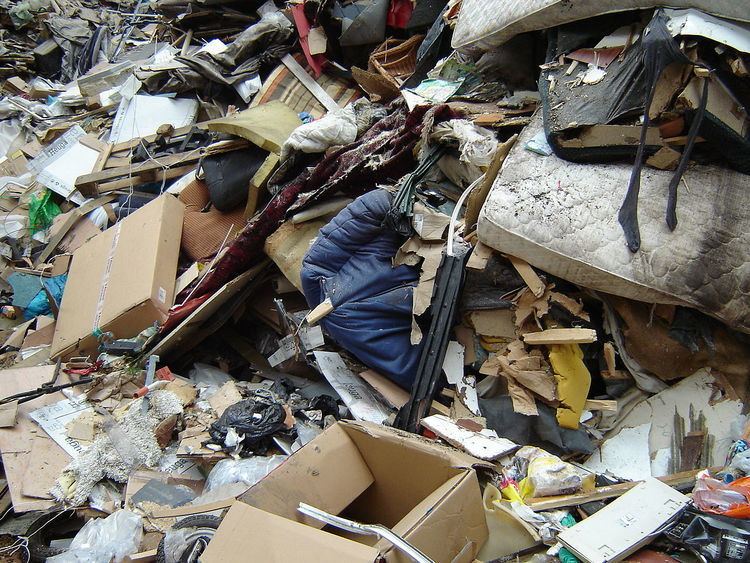 | ||
Biodegradable waste includes any organic matter in waste which can be broken down into carbon dioxide, water, methane or simple organic molecules by micro-organisms and other living things using composting, aerobic digestion, anaerobic digestion or similar processes. In waste management, it also includes some inorganic materials which can be decomposed by bacteria. Such materials include gypsum and its products such as plasterboard and other simple organic sulfates which can be decomposed to yield hydrogen sulfide in anaerobic land-fill conditions.
Contents
In domestic waste collection, the scope of biodegradable waste may be narrowed to include only those degradable wastes capable of being handled in the local waste handling facilities.
Uses of biodegradable waste
Biodegradable waste can be used for composting or a resource for heat, electricity and fuel by means of incineration or anaerobic digestion. Swiss Kompogas and the Danish AIKAN process are examples of anaerobic digestion of biodegradable waste. While incineration can recover the most energy, anaerobic digestion plants retain the nutrients and compost for the soil and still recover some of the contained energy in the form of biogas. Kompogas produced 27 million Kwh of electricity and biogas in 2009. The oldest of the company's own lorries has achieved 1,000,000 kilometers driven with biogas from household waste in the last 15 years.
Areas relying on organic waste
Featured in an edition of The Economist that predicted events in 2014, it was revealed that Massachusetts creates roughly 1.4 million tons of organic waste every year. Massachusetts, along with Connecticut and Vermont, are also going to enact laws to divert food waste from landfills.
In small and densely populated states, landfill capacity is limited so disposal costs are higher ($60–90 per ton in MA compared to national average of $45). Decomposing food waste generates methane, a notorious greenhouse gas. However, this biogas can be captured and turned into energy through anaerobic digestion, and then sold into the electricity grid.
Anaerobic digestion grew in Europe, but is starting to develop in America. Massachusetts is increasing its production of anaerobic digesters.
Climate change impacts
The main environmental threat from biodegradable waste is the production of methane and other greenhouse gases.
